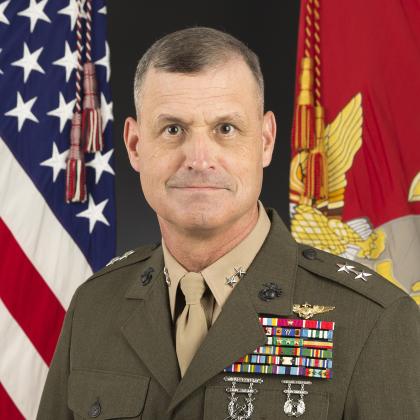Understanding Allies' Operational Objectives Is Good Strategy
Allies and partners add volume to the U.S. forces when facing adversaries and better understanding their interests emerges as a military asset.
“Interoperability is to start a little bit earlier in the process and understand what our partners' national objectives are,” said Vice Adm. Craig Clapperton, commander, Fleet Cyber Command and U.S. 10th Fleet.
Growing a relationship is based on “grabbing the small pieces to have strategic impact,” according to Vice Adm. Andrew Tiongson, commander, Pacific Area, and commander, Defense Force West, U.S. Coast Guard.
Adm. Tiongson offered the recent example of the tanker Princess Empress that suffered an accident leaving a 75-mile long oil spill off the coast of the Philippines in 2023. The country’s fishing and tourism industries are key to the livelihood of many in the archipelago.
“We send a five-person Coast Guard team over there, they provide effort and expertise: they work with the Korea Coast Guard, the Japan Coast Guard and the Philippine Coast Guard and at the end of the day, we have an O-5 that is basically advising the commandant of the Philippine Coast Guard and the president of the Philippines,” Adm. Tiongson told the audience at the panel, “What Key Capabilities Do Our Numbered Fleets Need to Address the Near and Far Global Security Demands?” at the WEST 2024 conference.
Collaborating with allies and directly addressing the leadership of the island nation is part of an incremental approach the Coast Guard uses to show China a cohesive alliance of shared interests.
Interoperability is to start a little bit earlier in the process and understand what our partners national objectives are.
Maj. Gen. Bradford Gering, acting commanding general, I Marine Expeditionary Force, explained how the Marines are present in Australia and how they use their assets there to foster contacts with the host country and its neighbors, as well as to test new concepts for potential future confrontation.
The Navy is working on expanded capabilities and is setting its cyber and space standards. As the operational needs are better understood, the service is building the commands to deploy these capabilities.
“The final assessment isn't complete yet, but we believe that that's going to drive an increase in our staff by 200 to 250 people,” explained Adm. Clapperton.

We have taken some very specific steps across my enterprise, to make sure that we have the right talent.
Despite experimenting and adopting new technologies, including artificial intelligence and sophisticated communications, concern remains around the specialists the services need to deploy and operate those advanced capabilities as one of the key future challenges, according to panel participants.
“We have taken some very specific steps across my enterprise, to make sure that we have the right talent and the right people to be able to integrate those capabilities,” said Gen. Gering.
The panel was moderated by Adm. Scott Swift, USN (Ret.) .Lt. Gen. Roger Tuner, USMC, commanding general of the III Marine Expeditionary Force, and Vice Adm. Michael Boyle, USN, commander, Third Fleet, also participated.
AFCEA co-hosts WEST 2024 with the U.S. Naval Institute. The yearly event will continue until February 15. You can join the conversation on this event on X, formerly Twitter, using the hashtag #WEST2024.




Comments